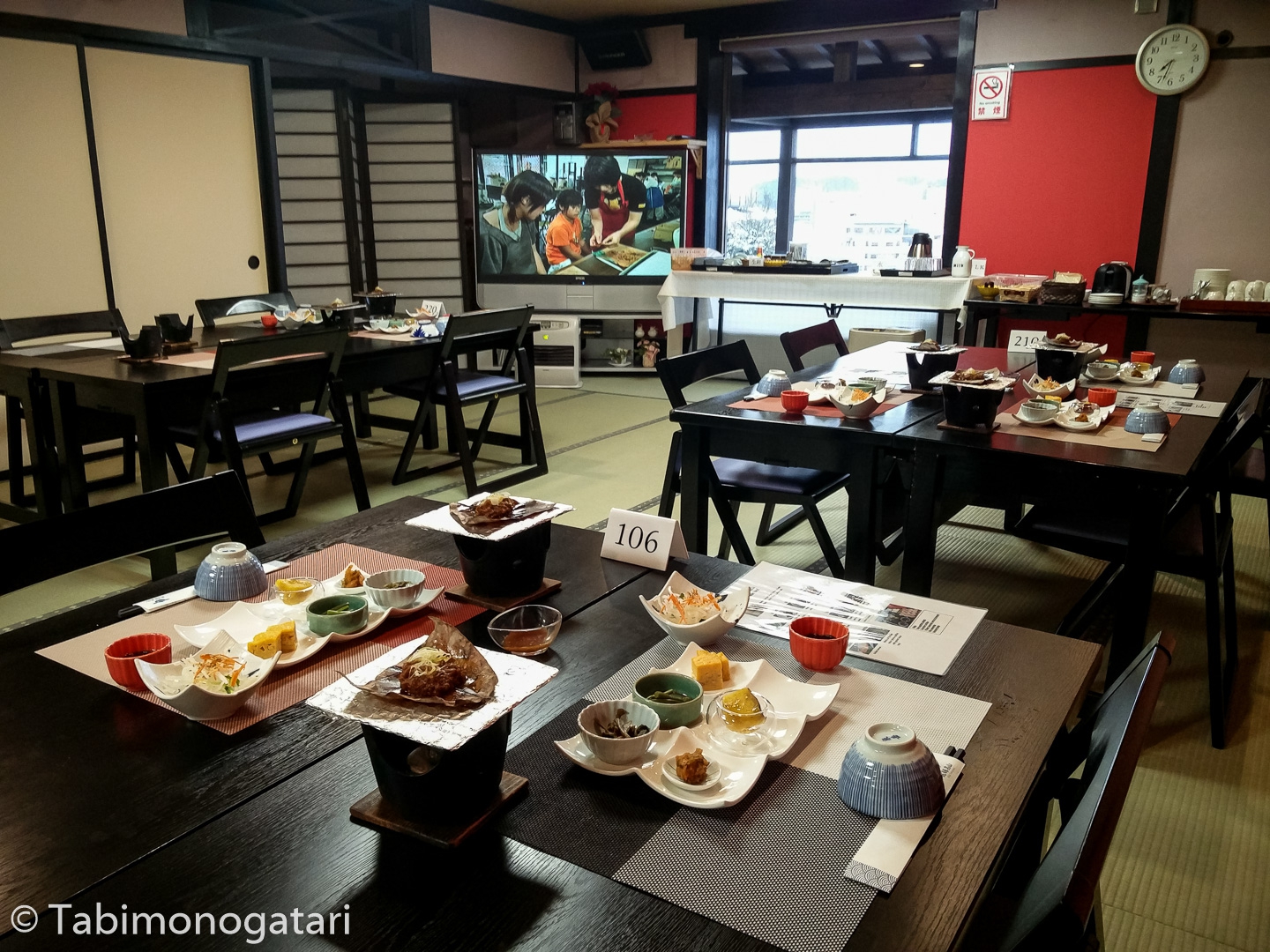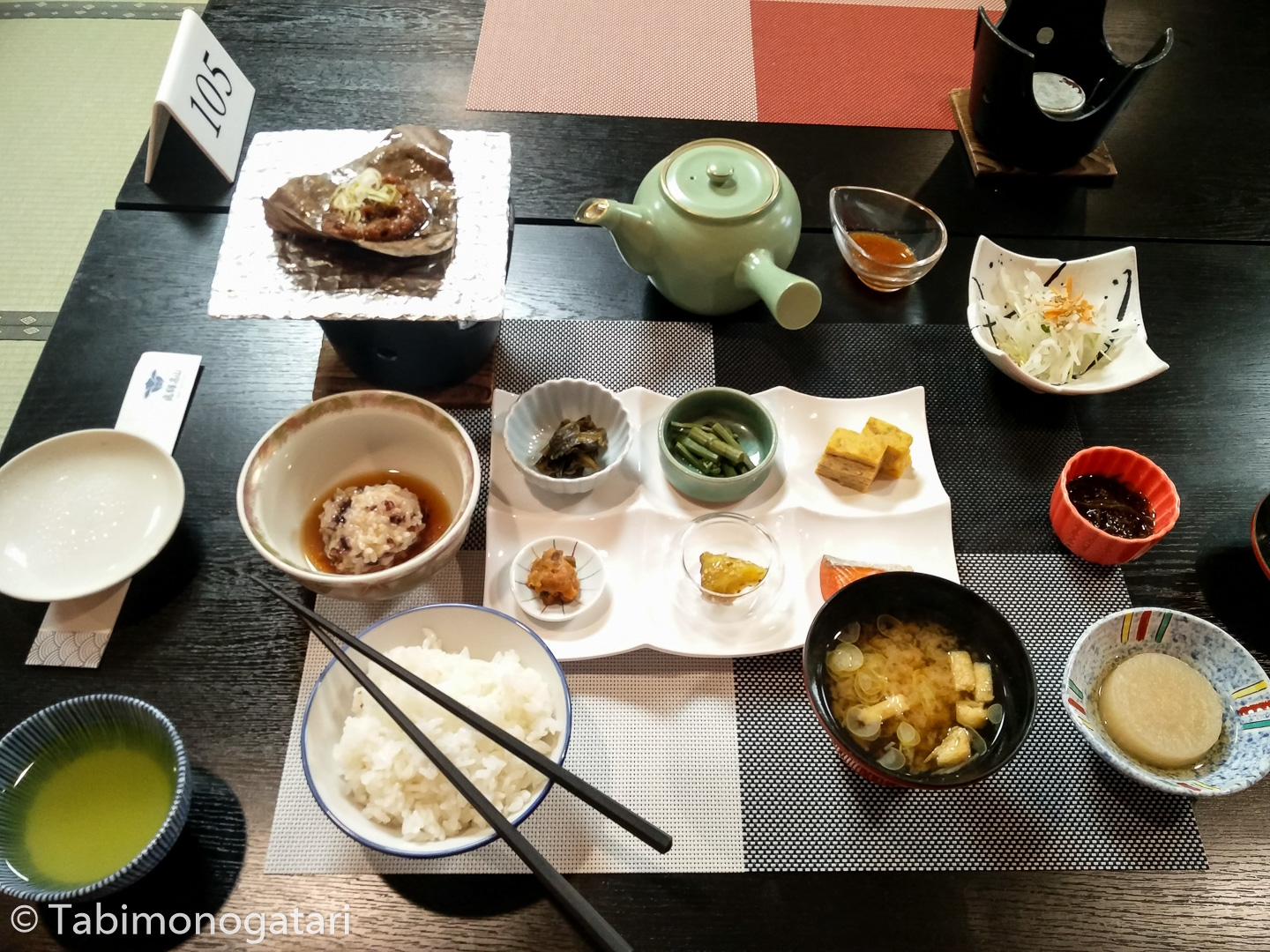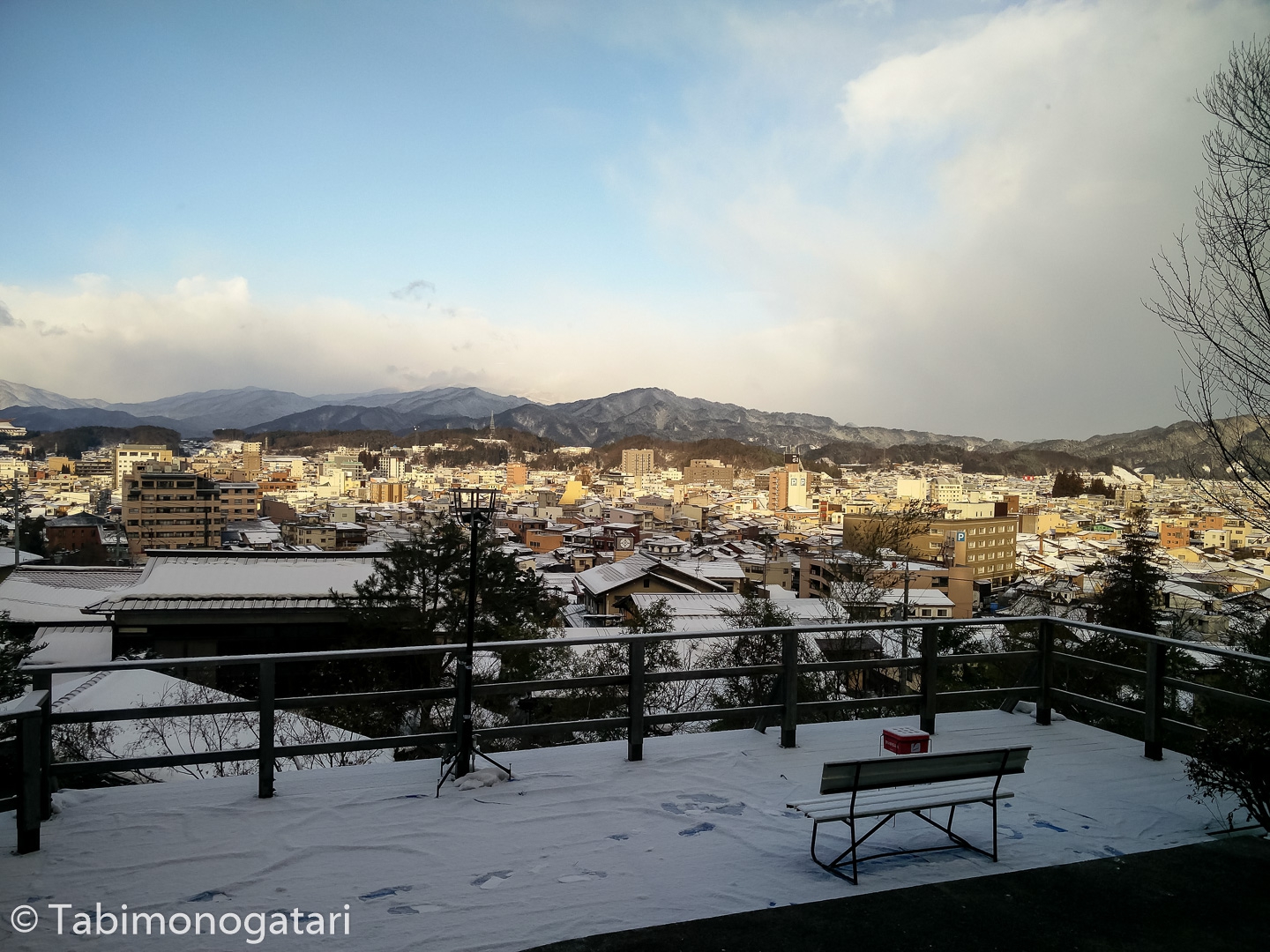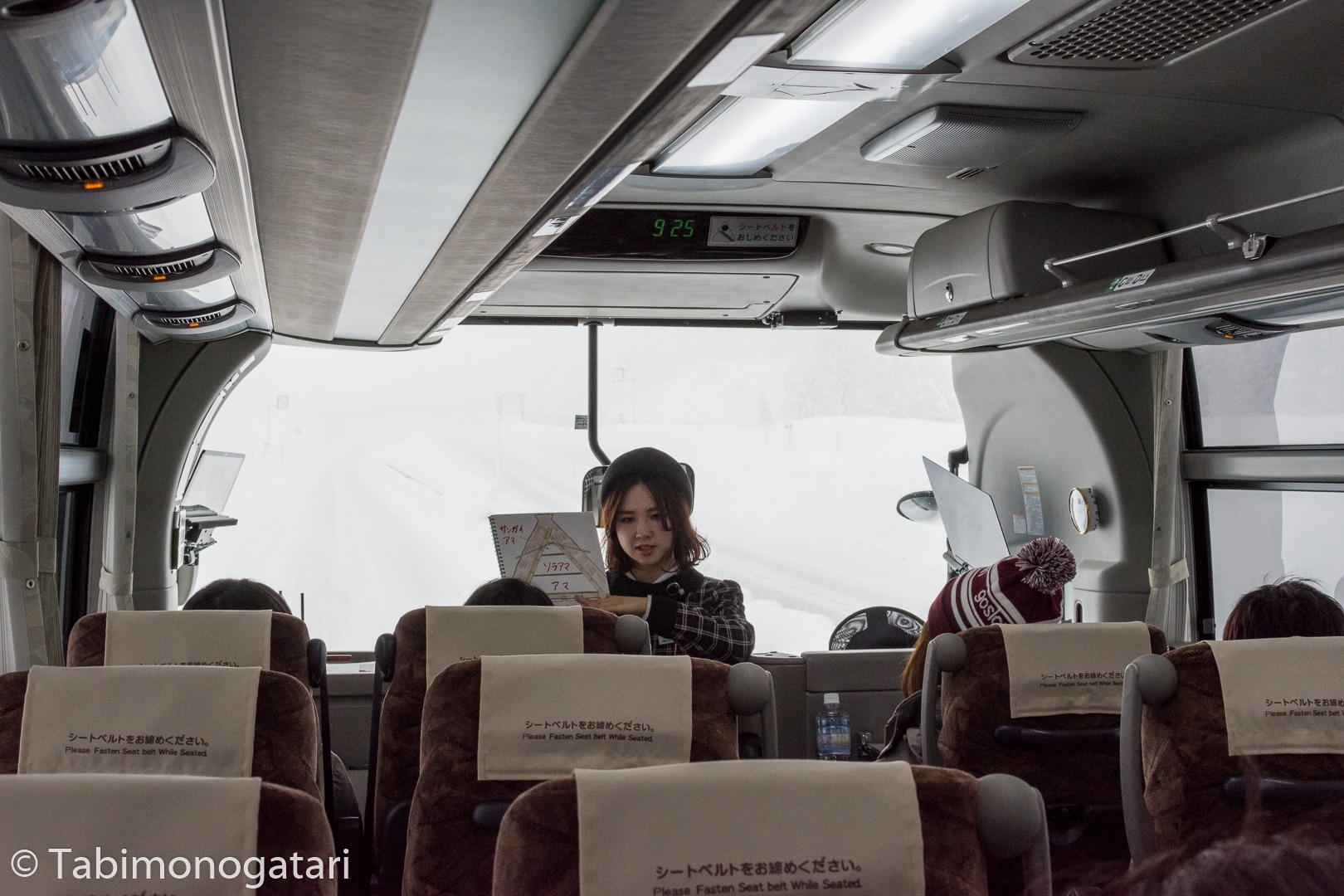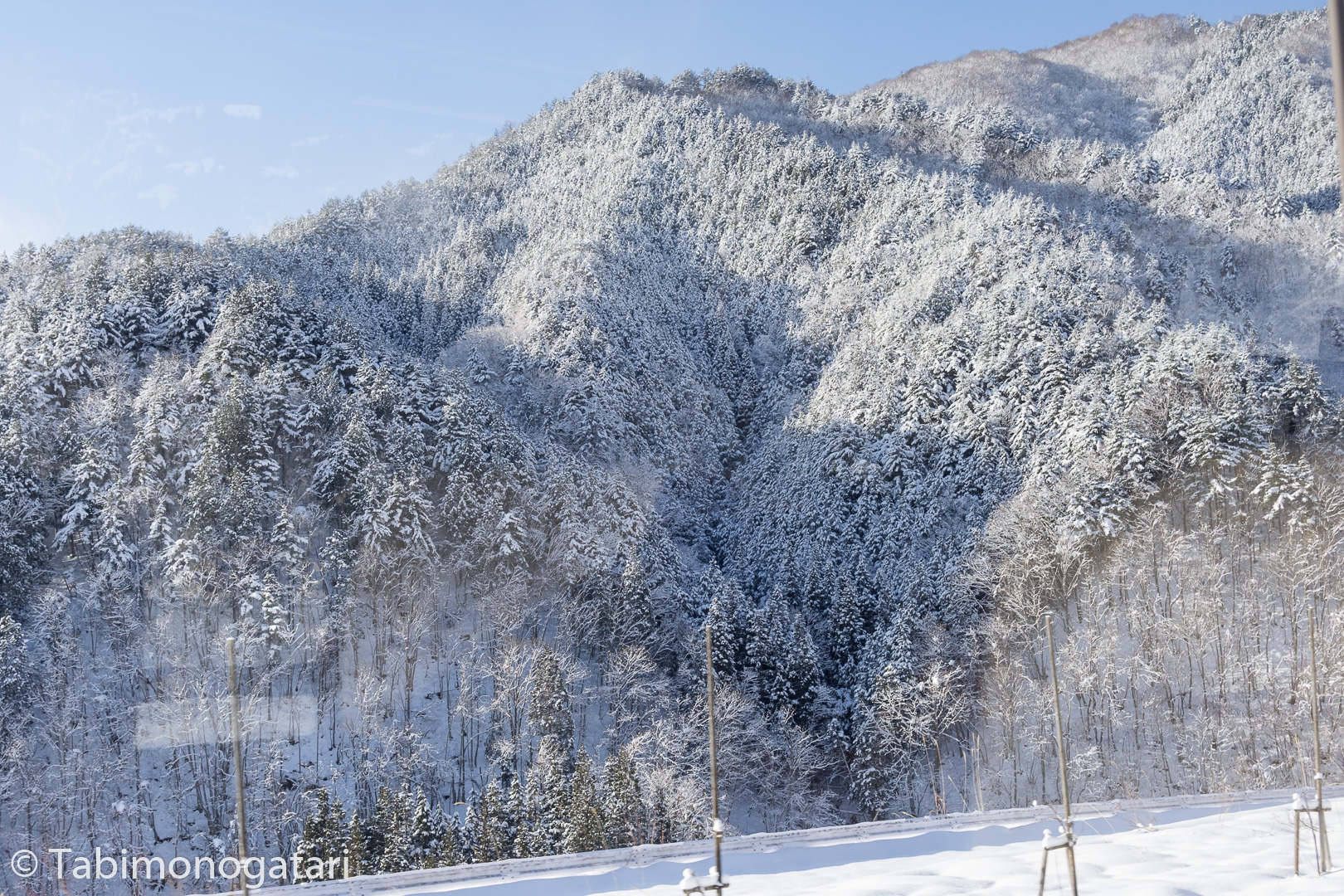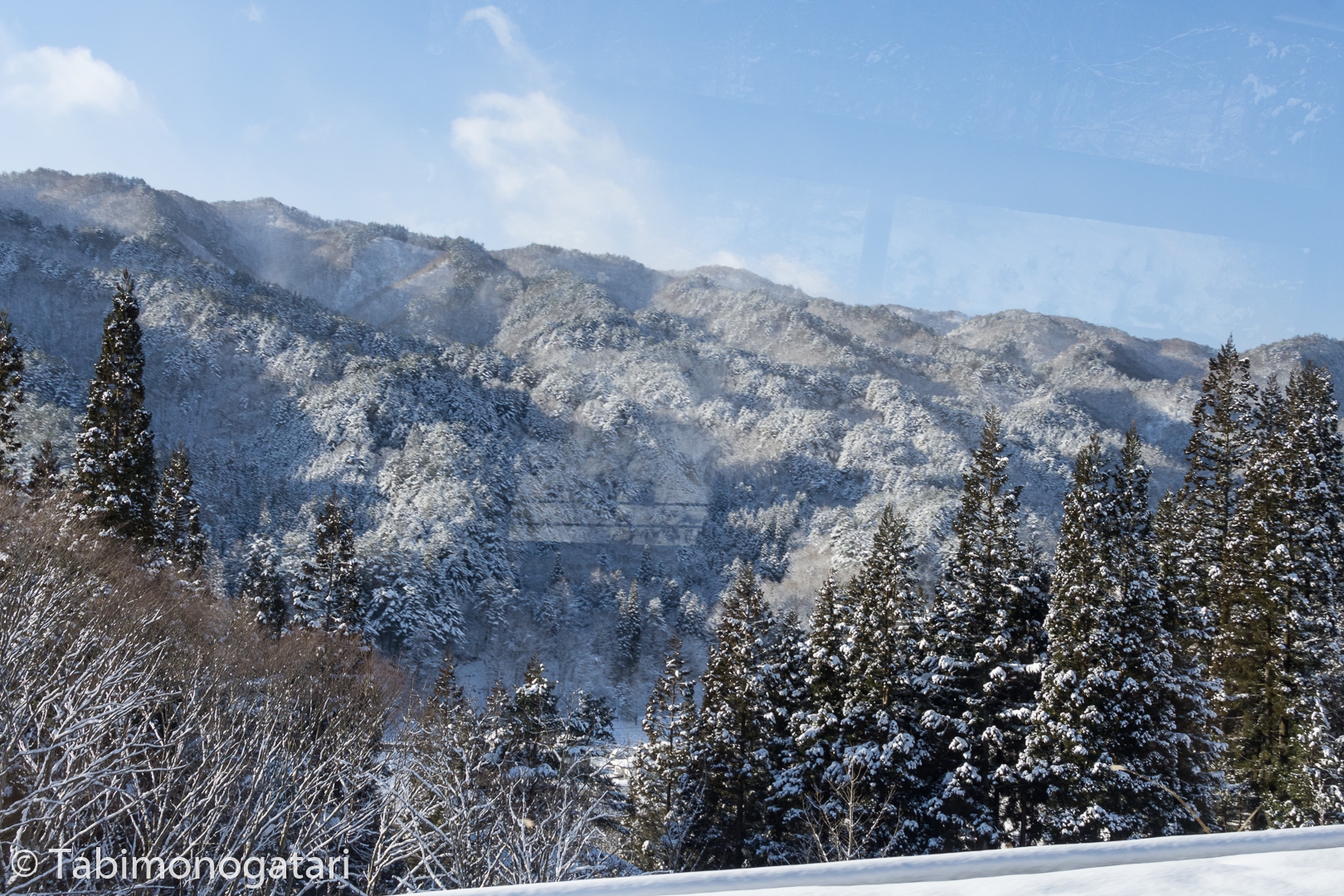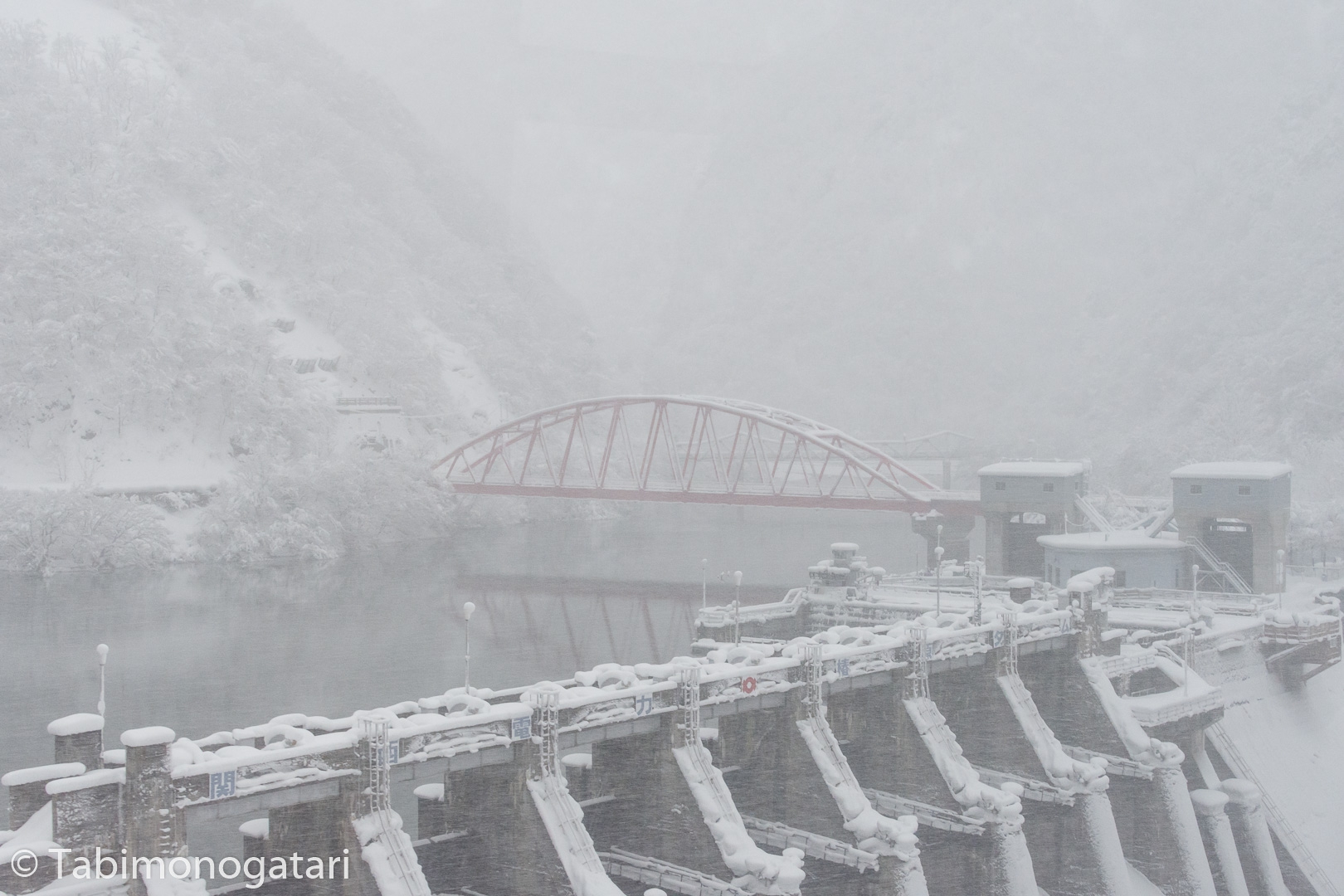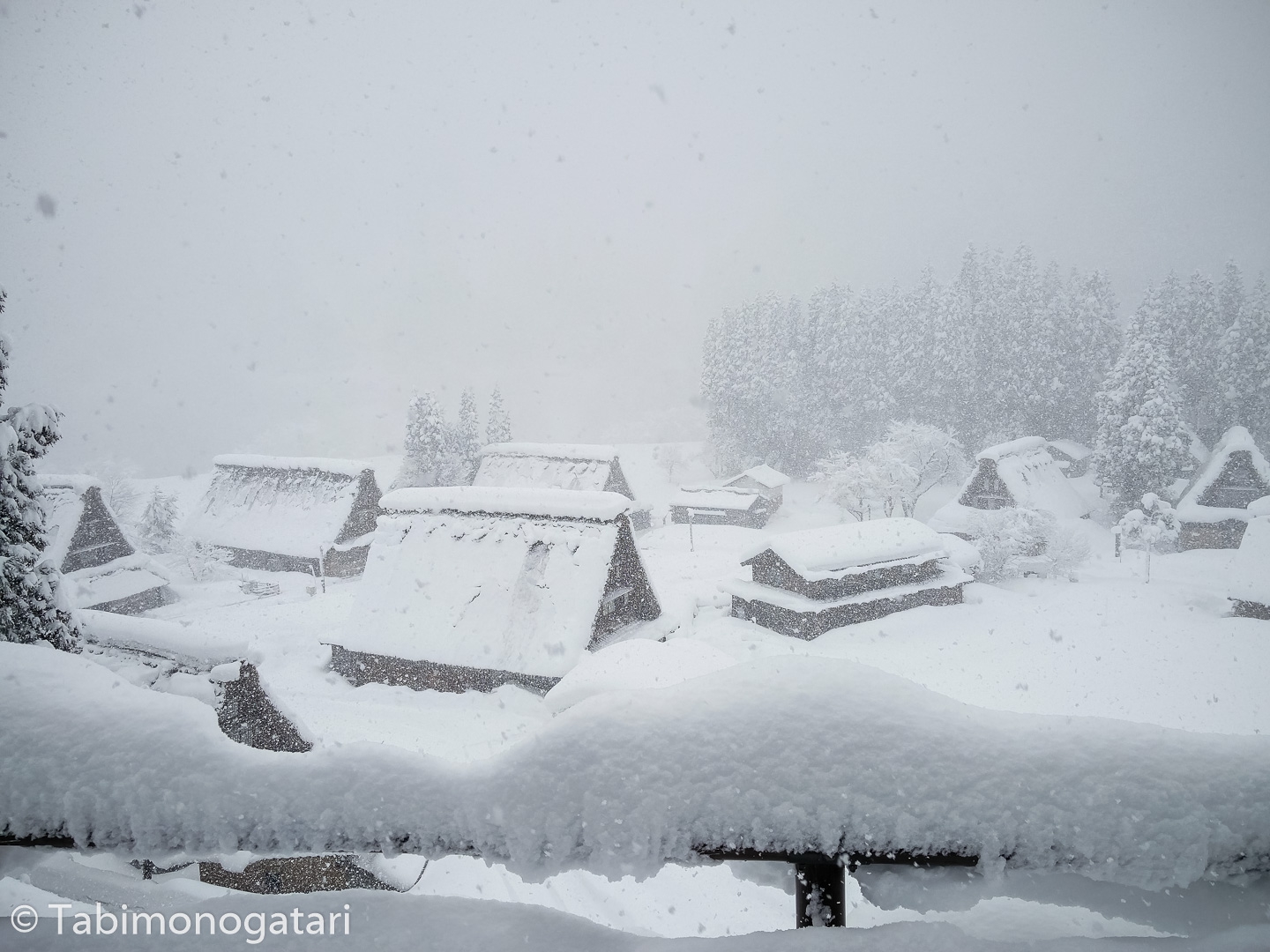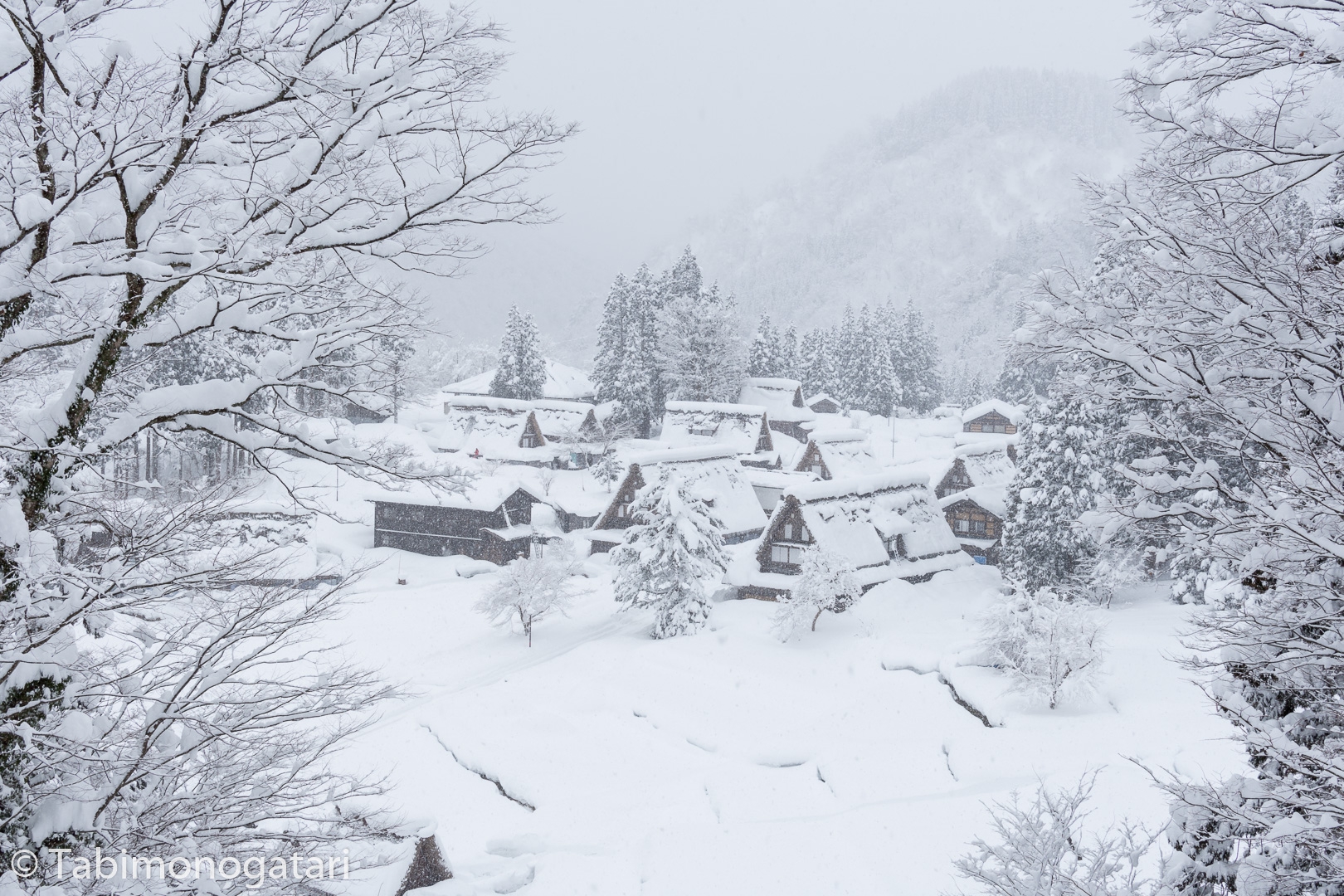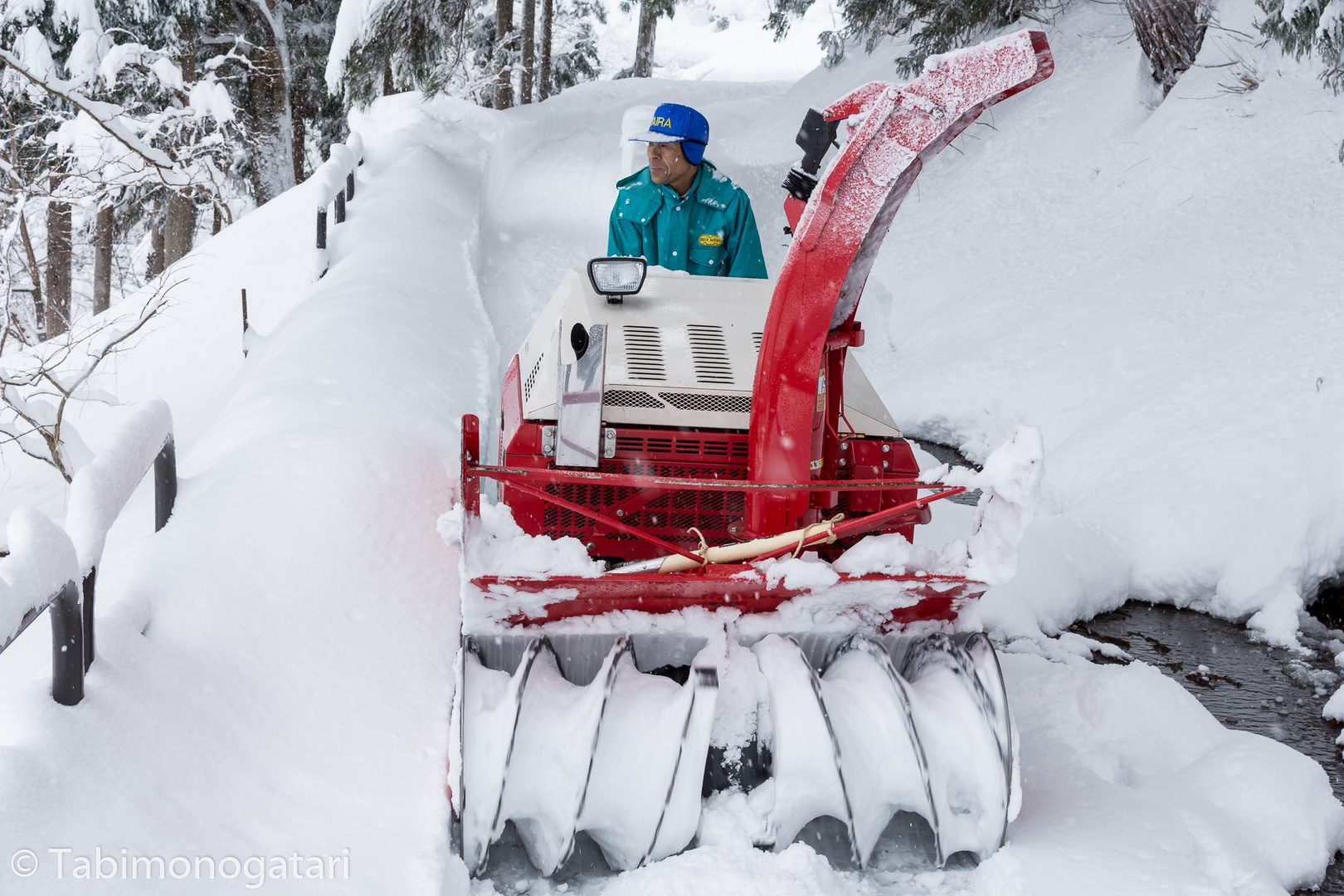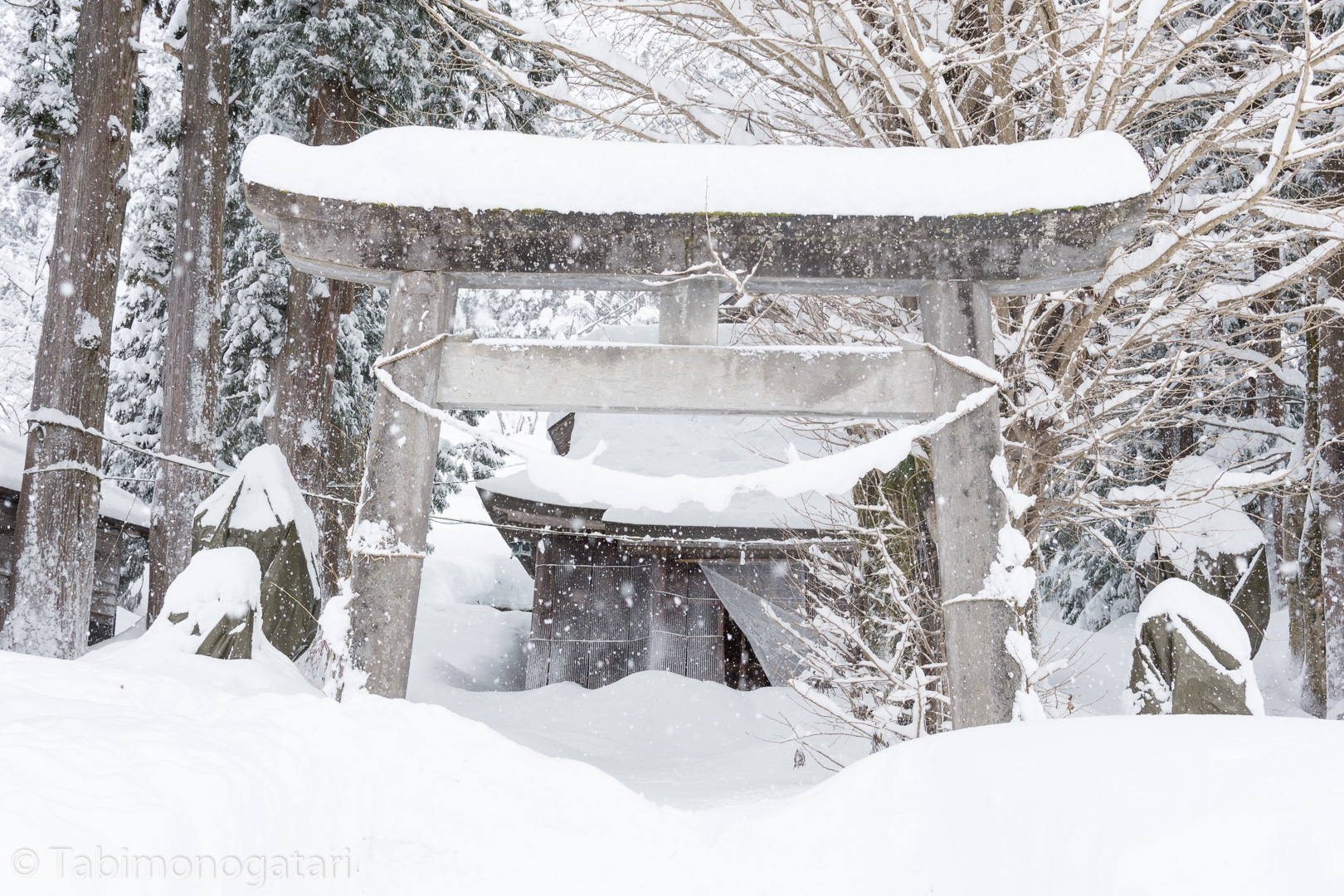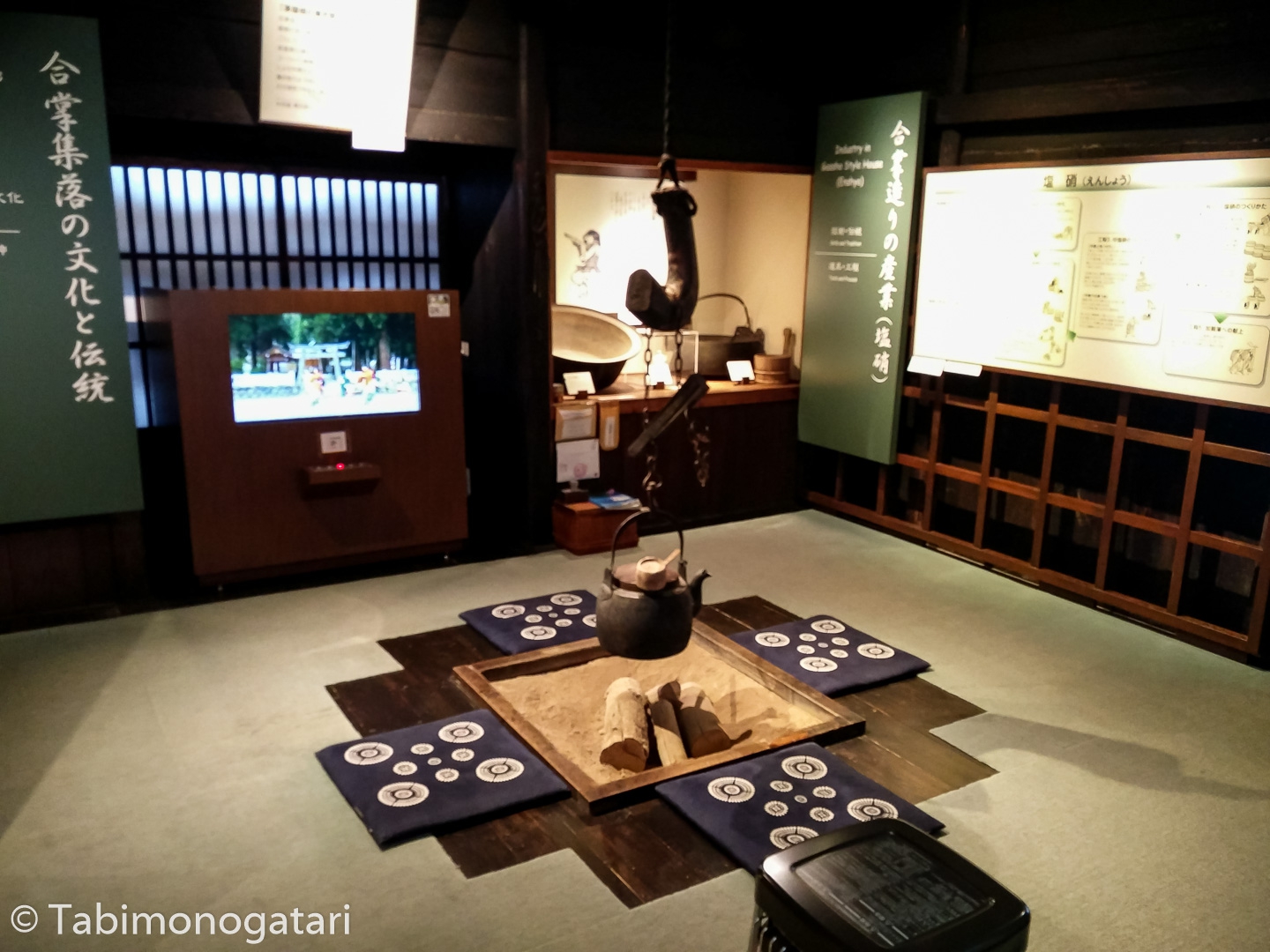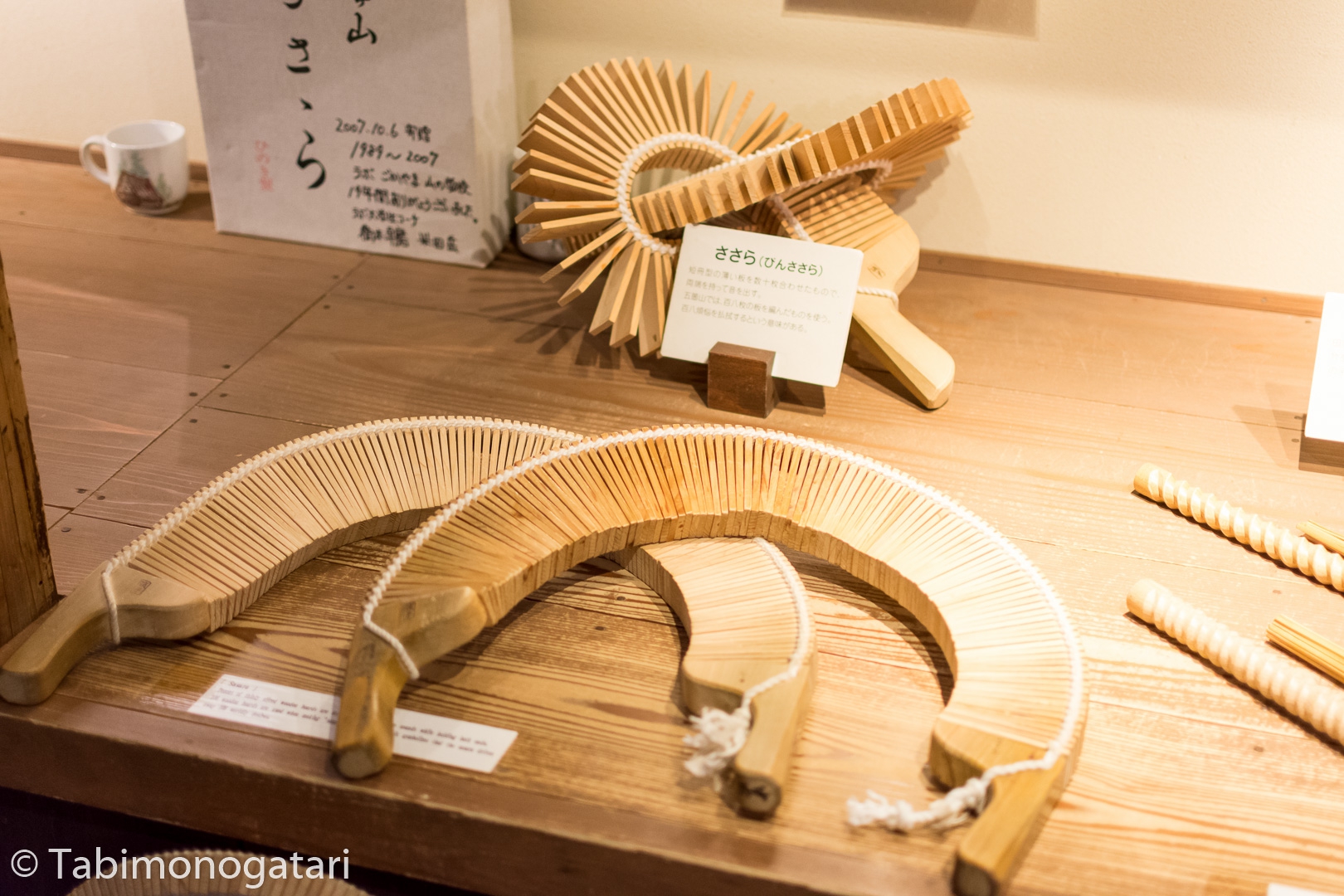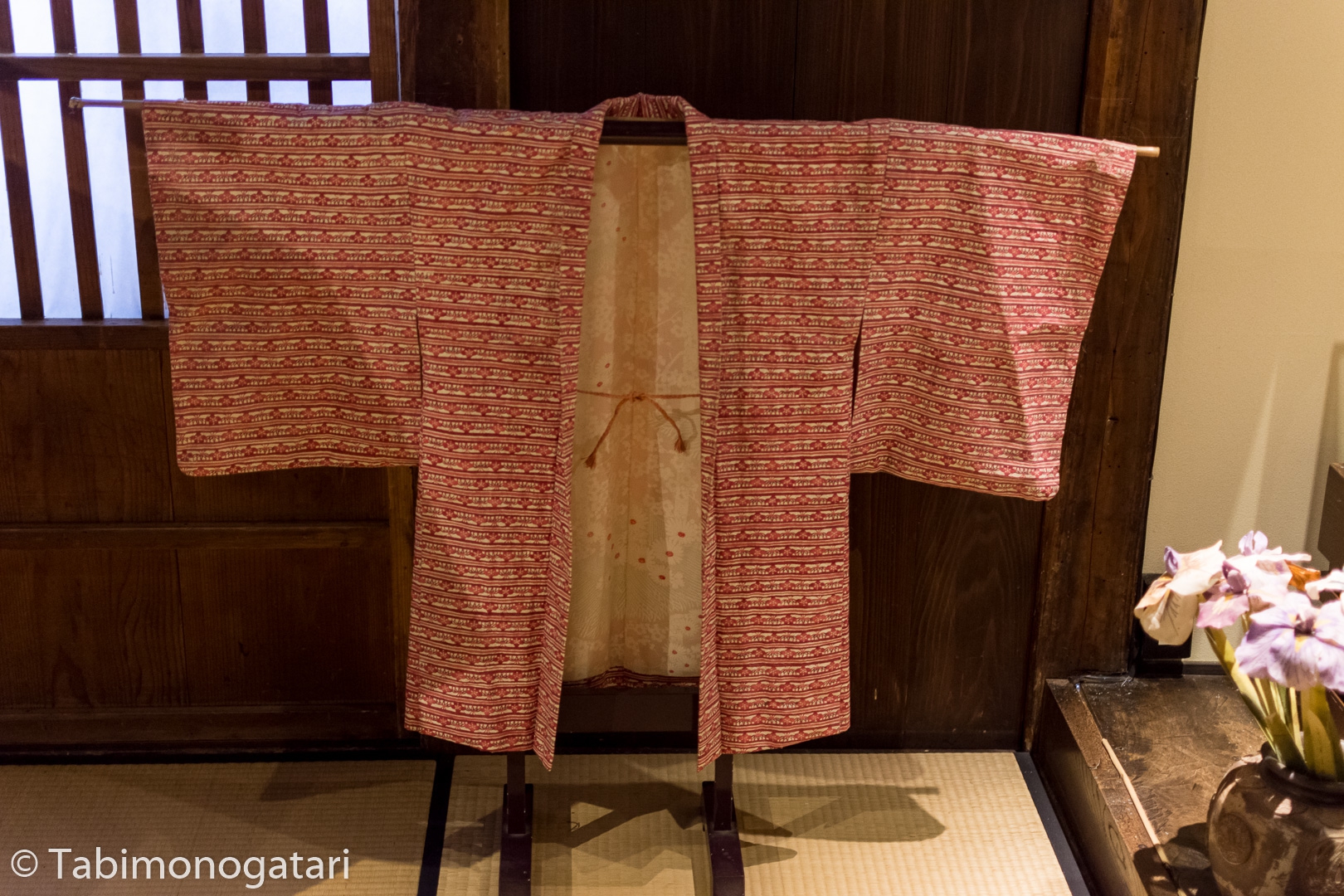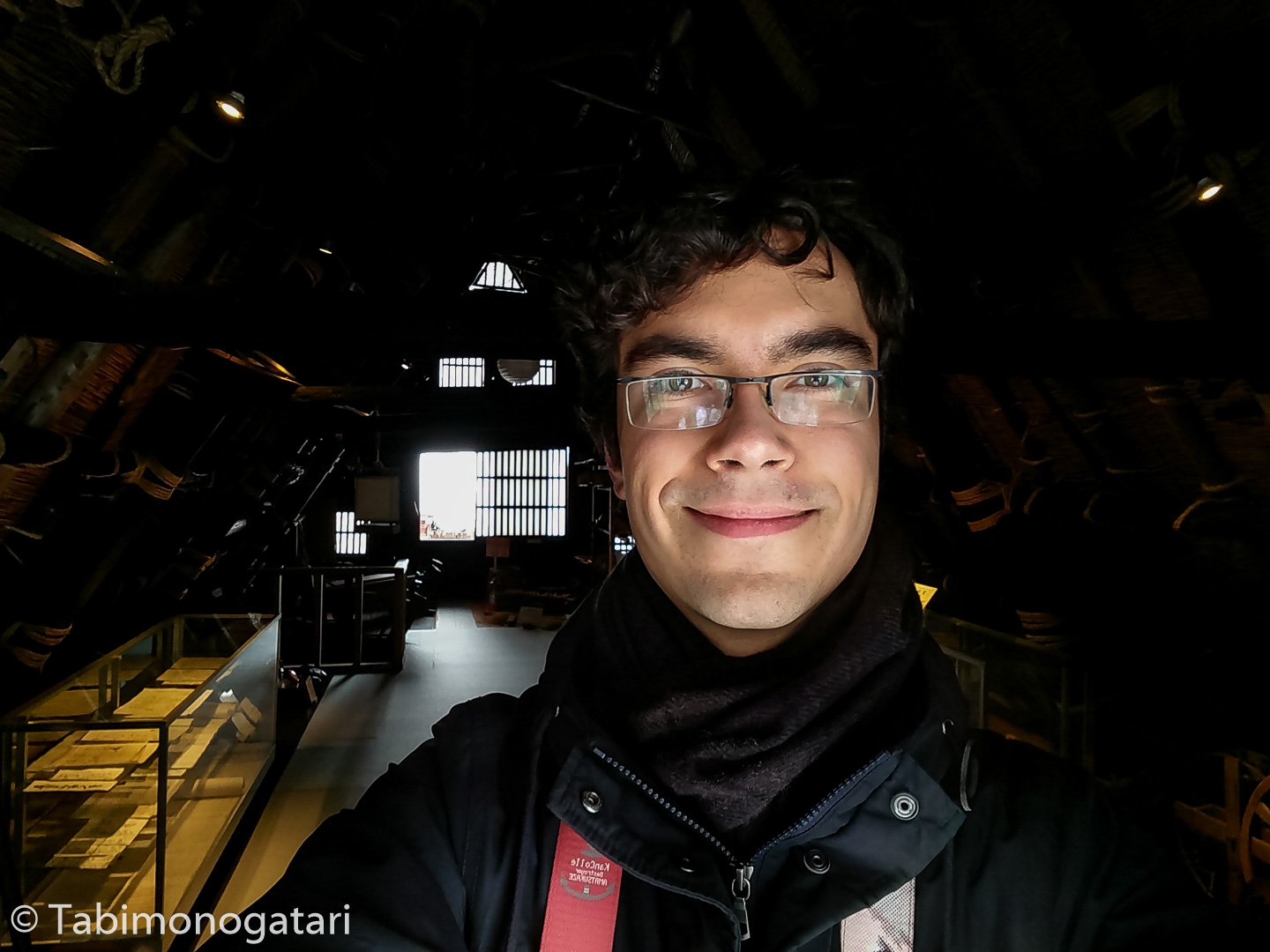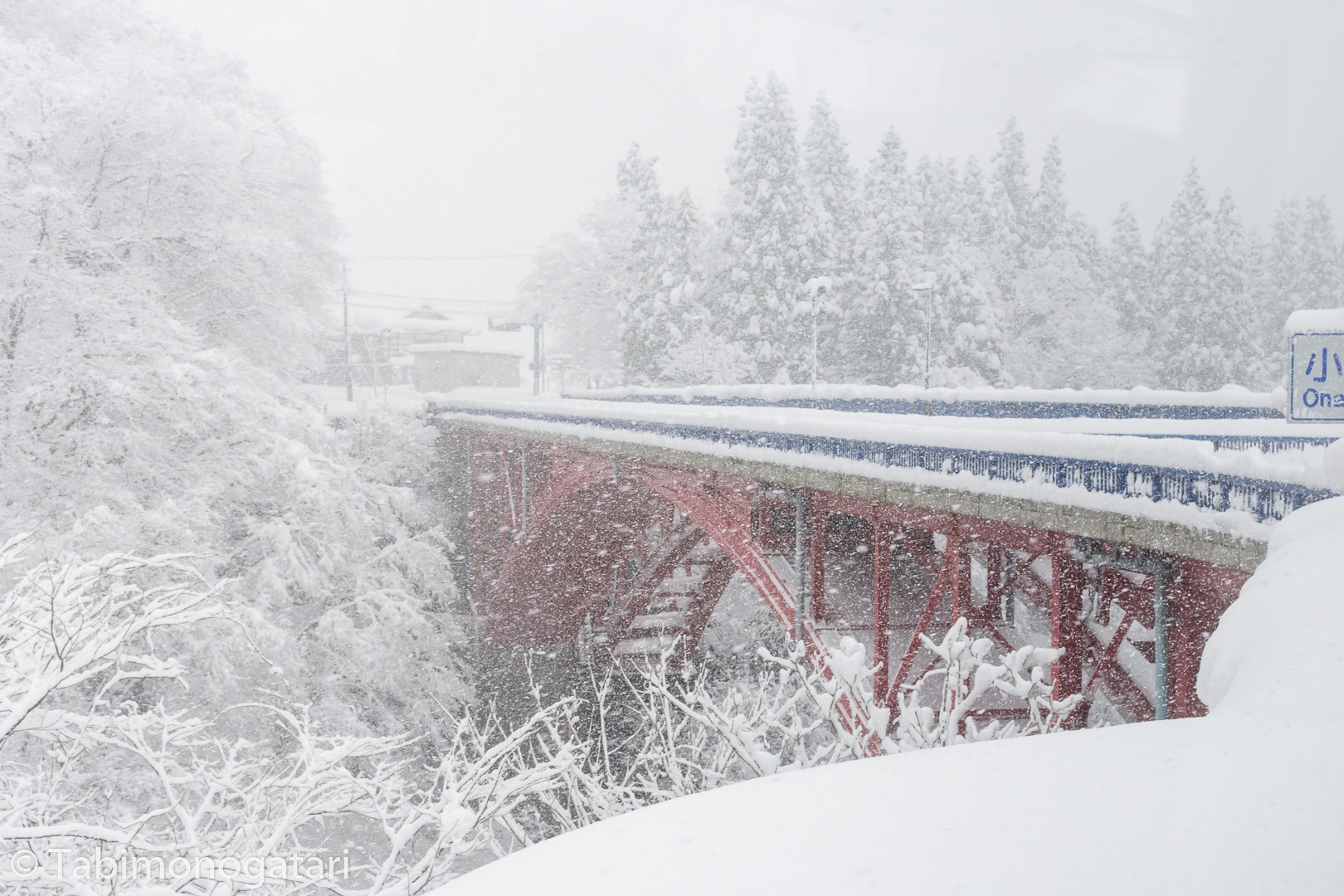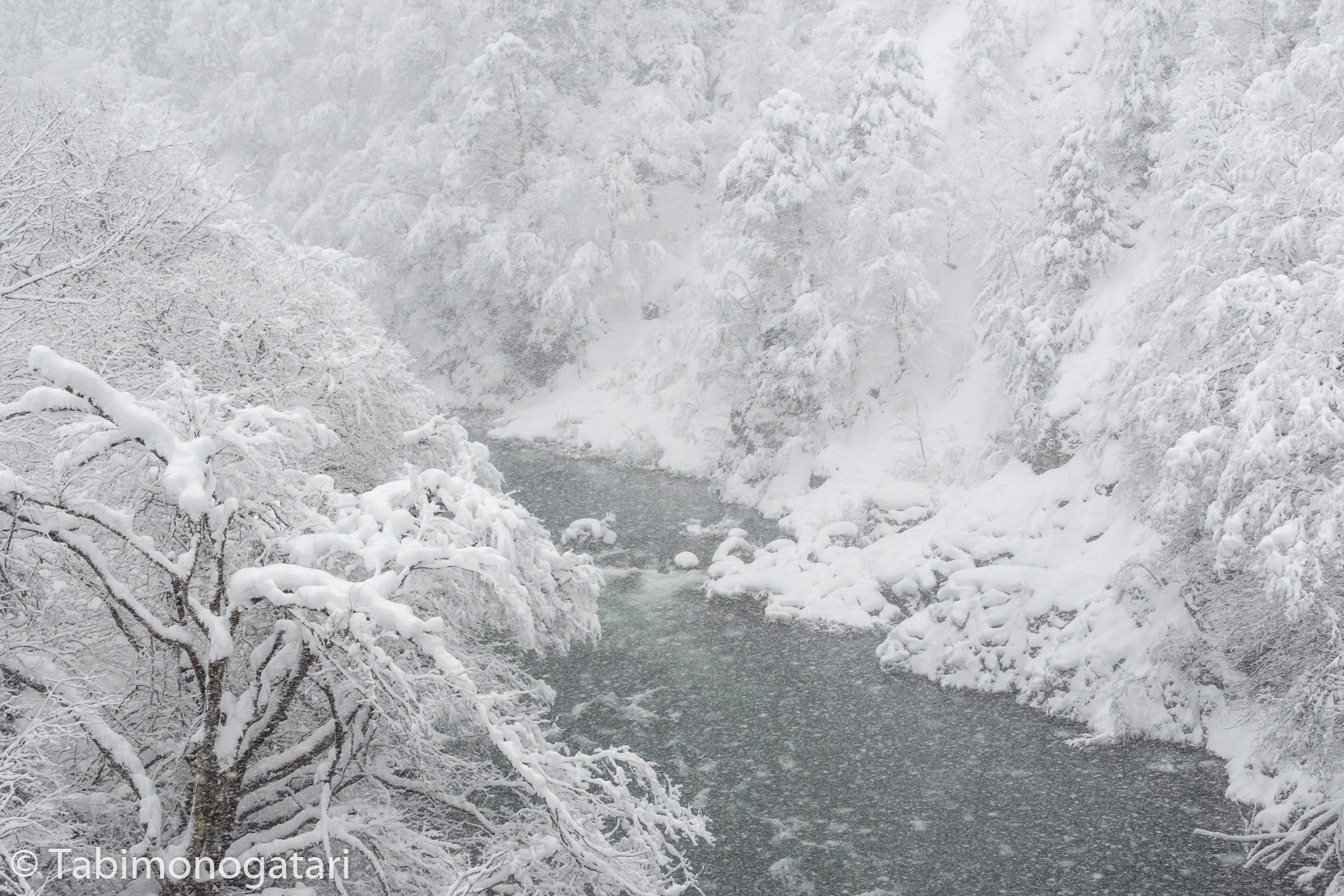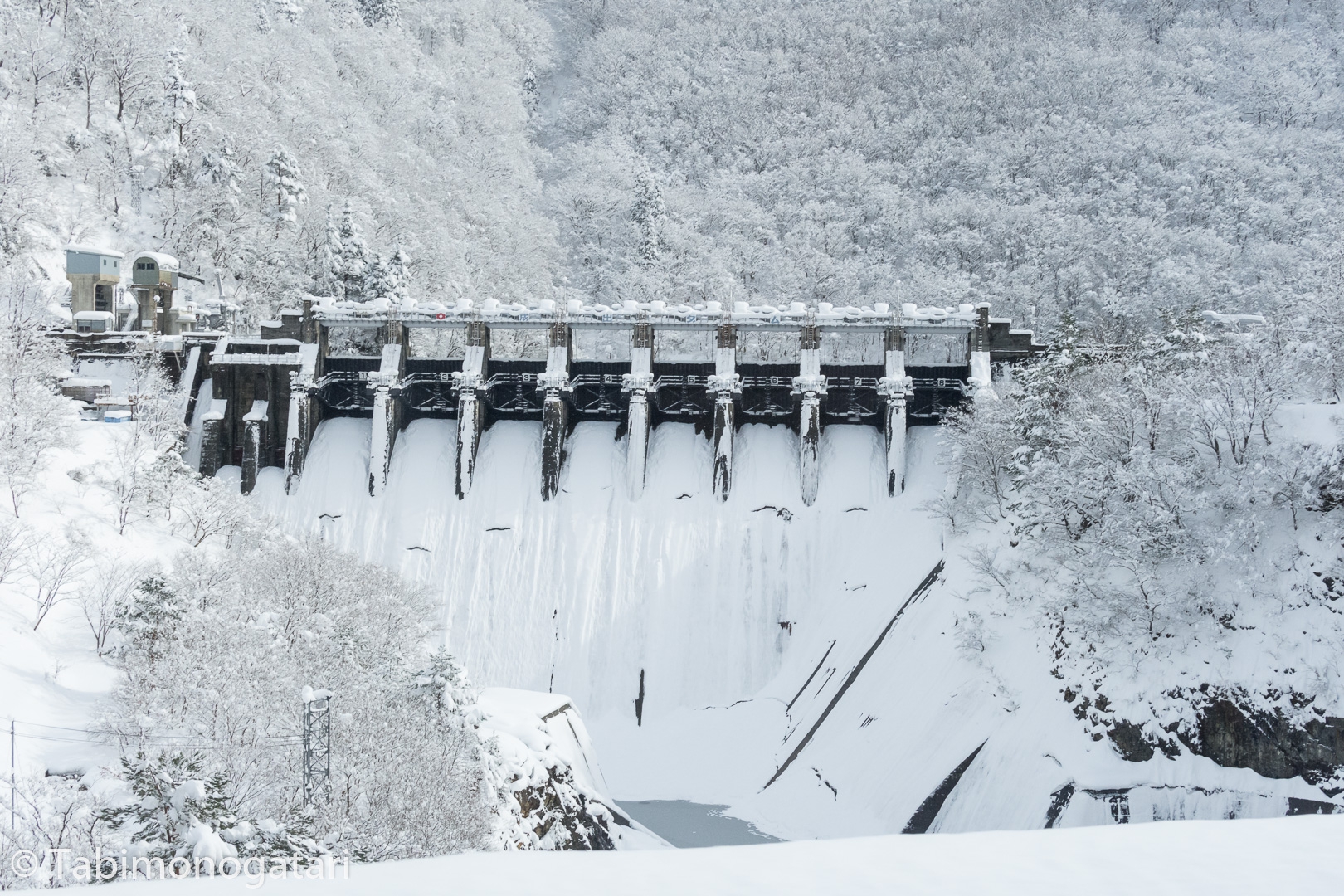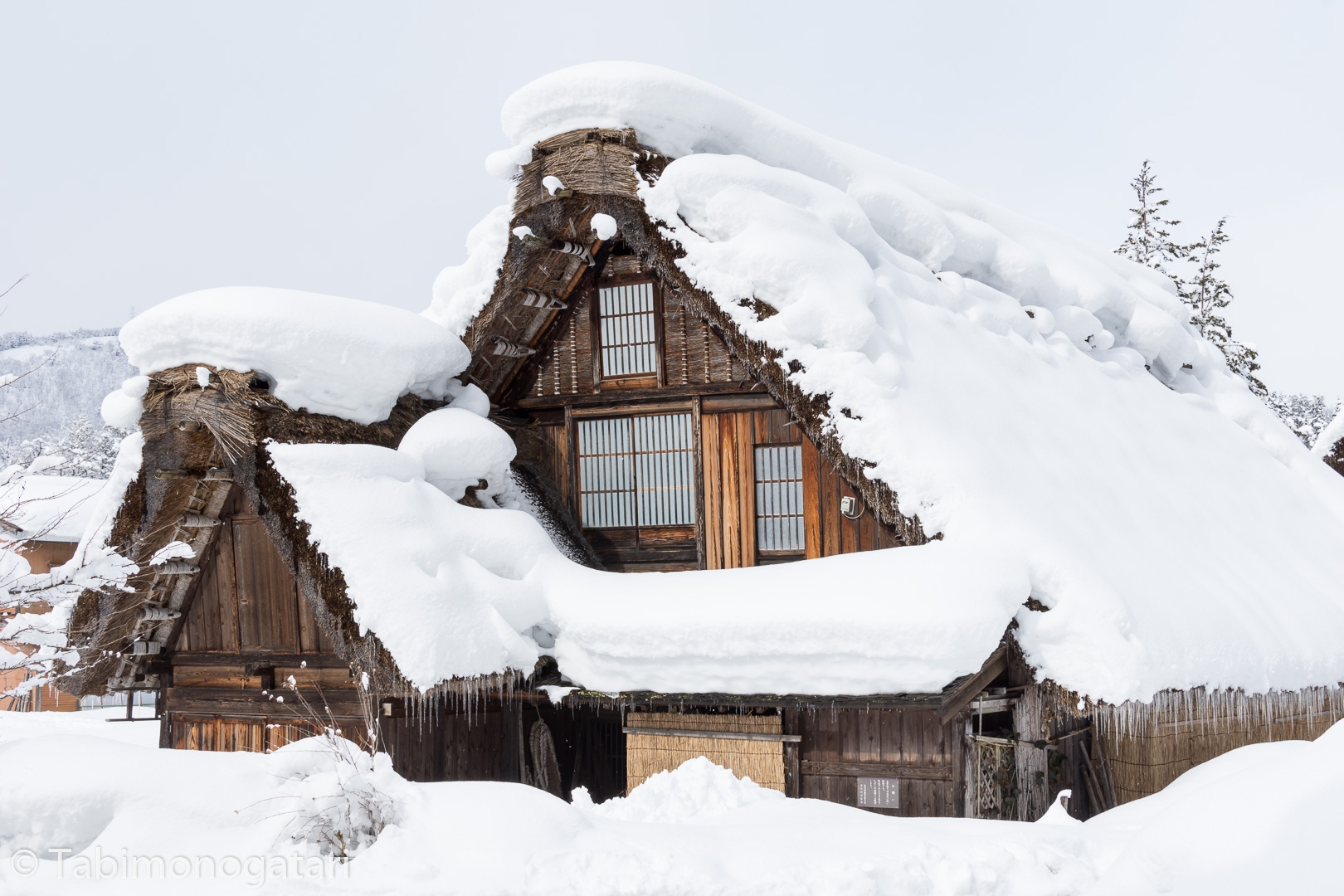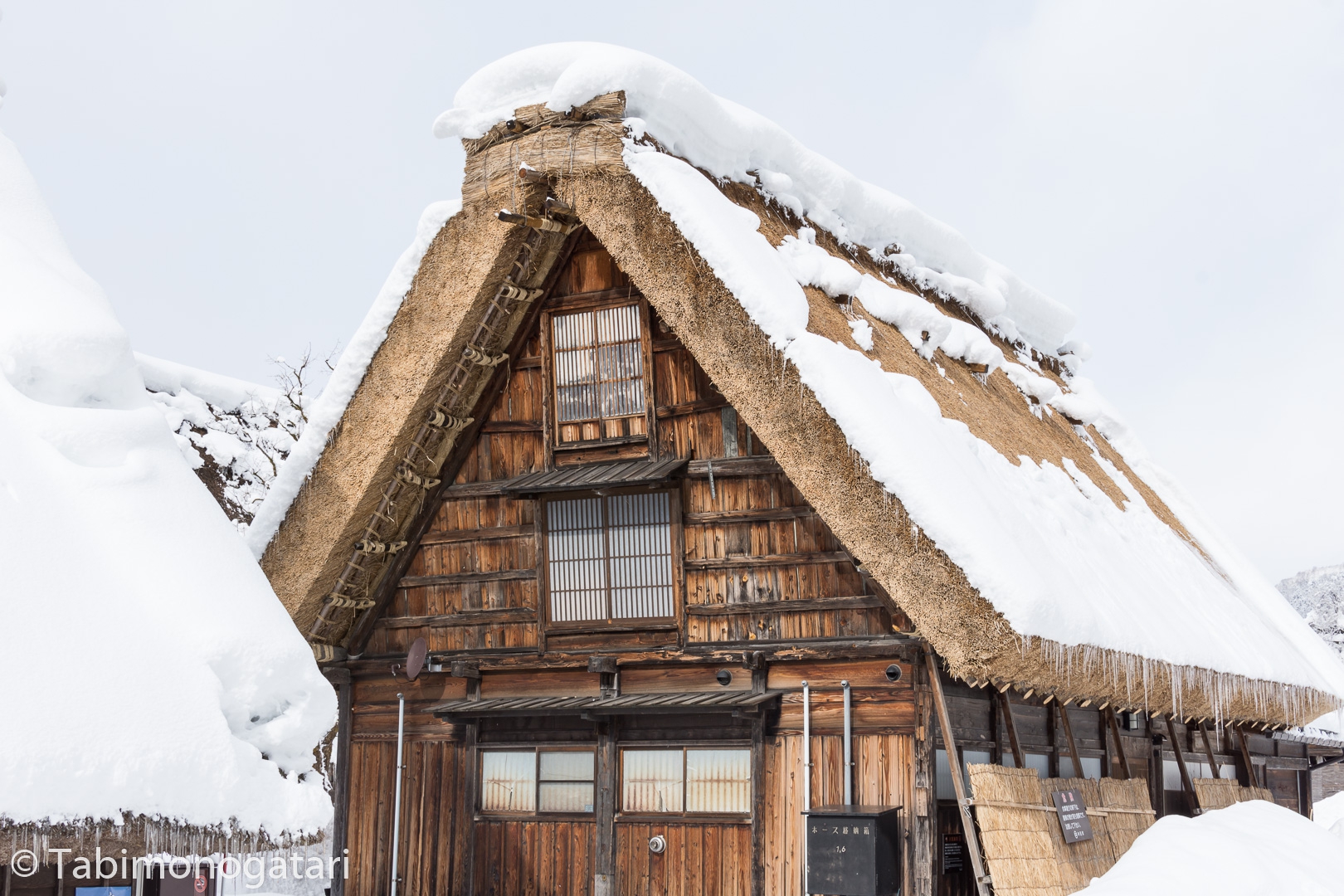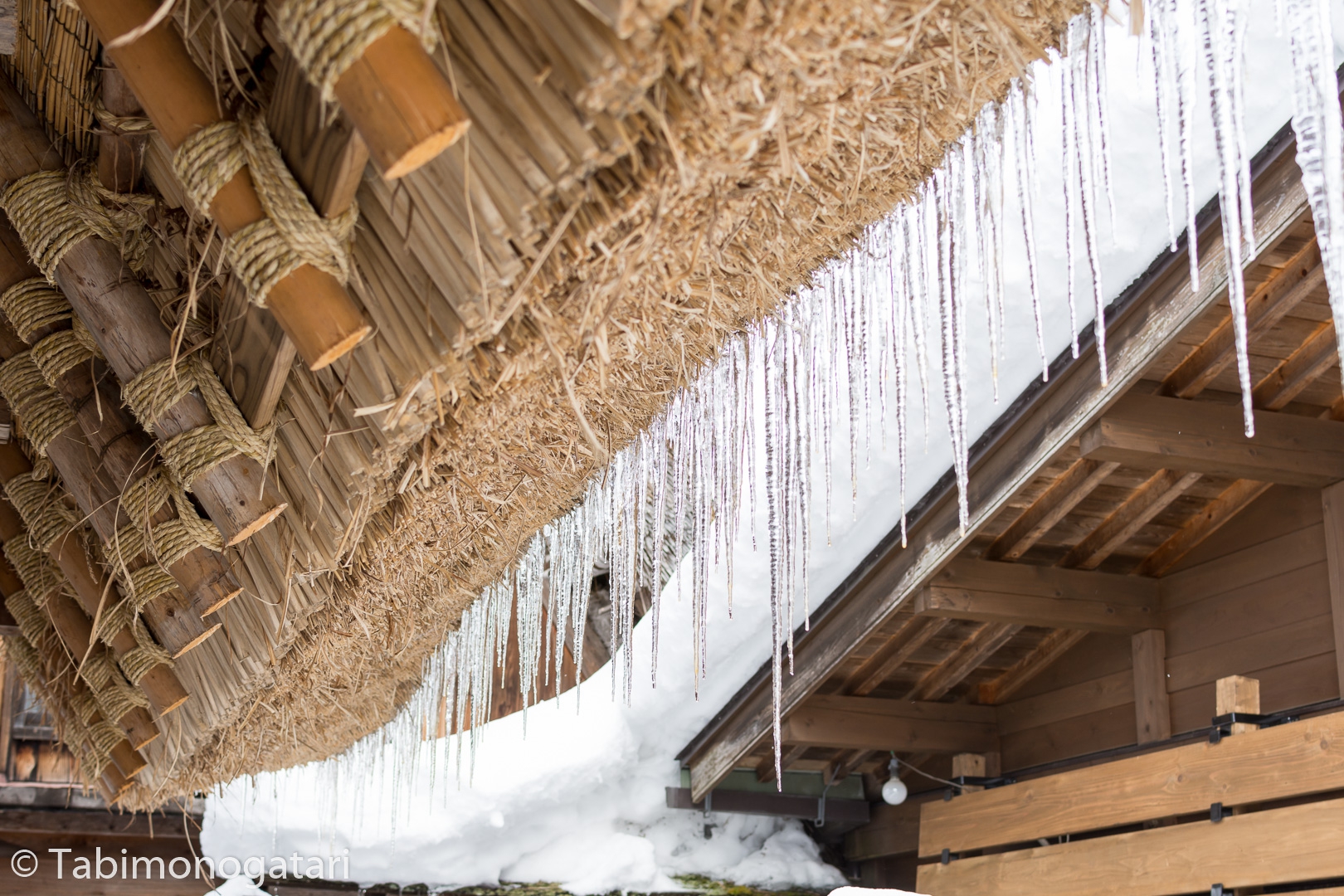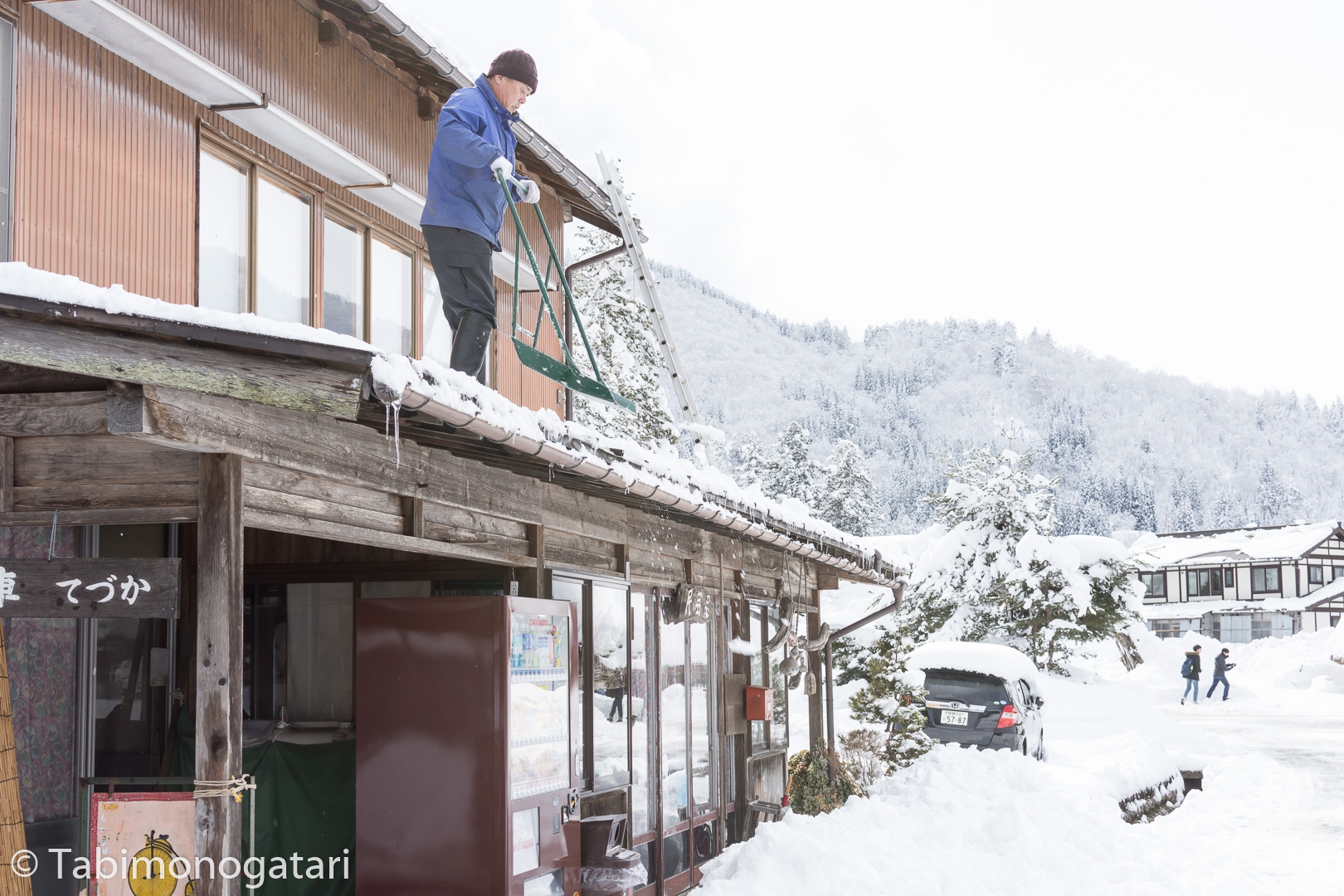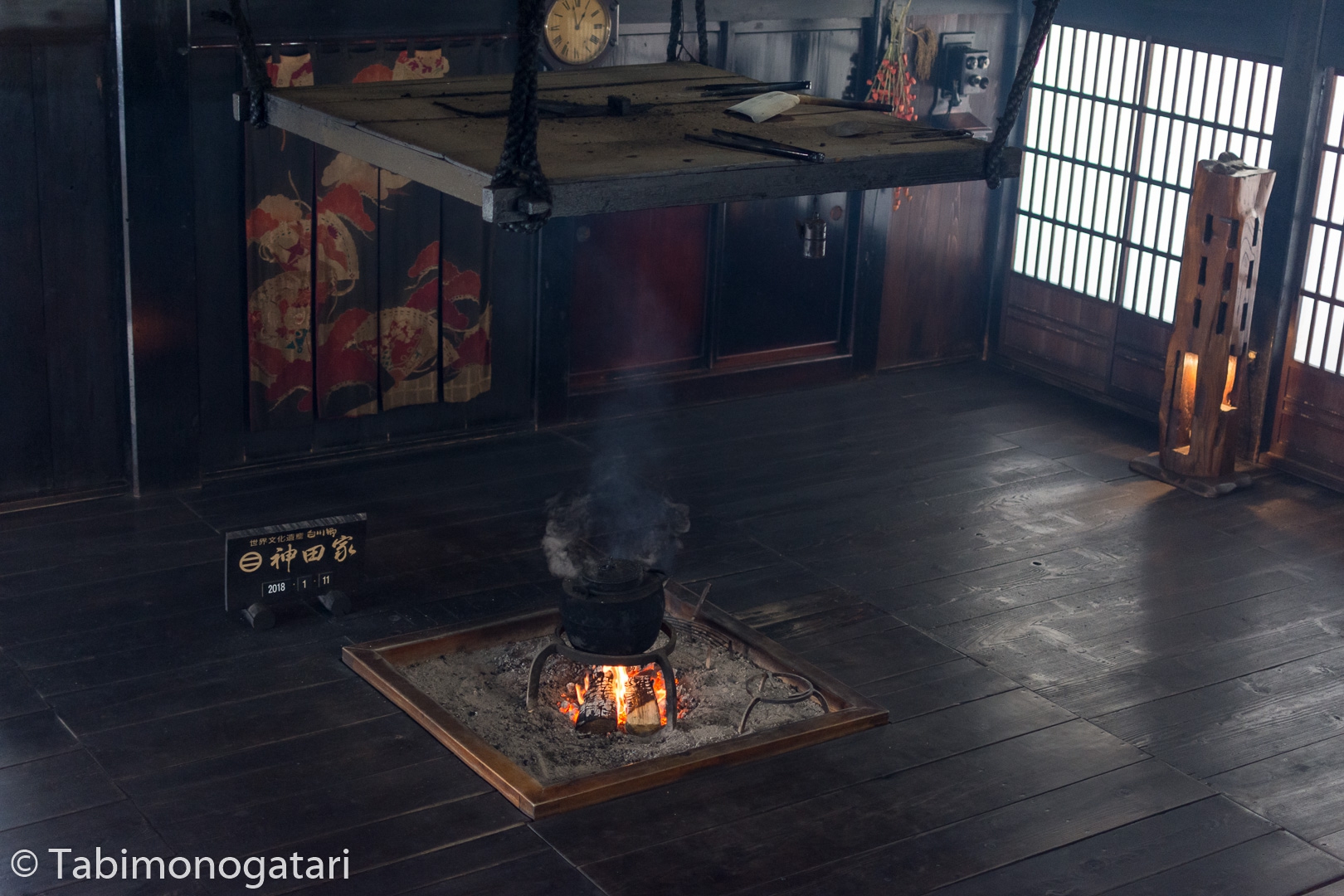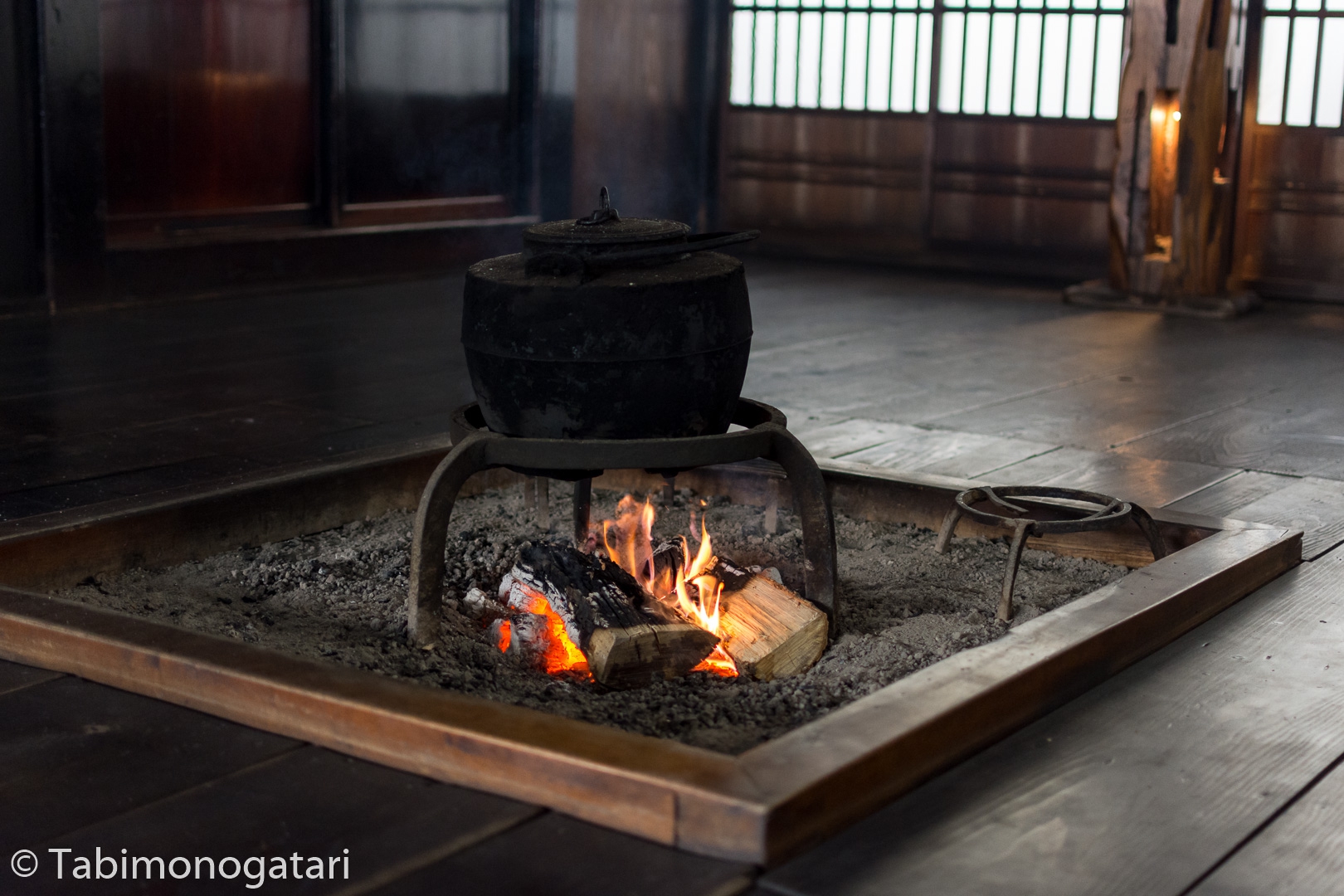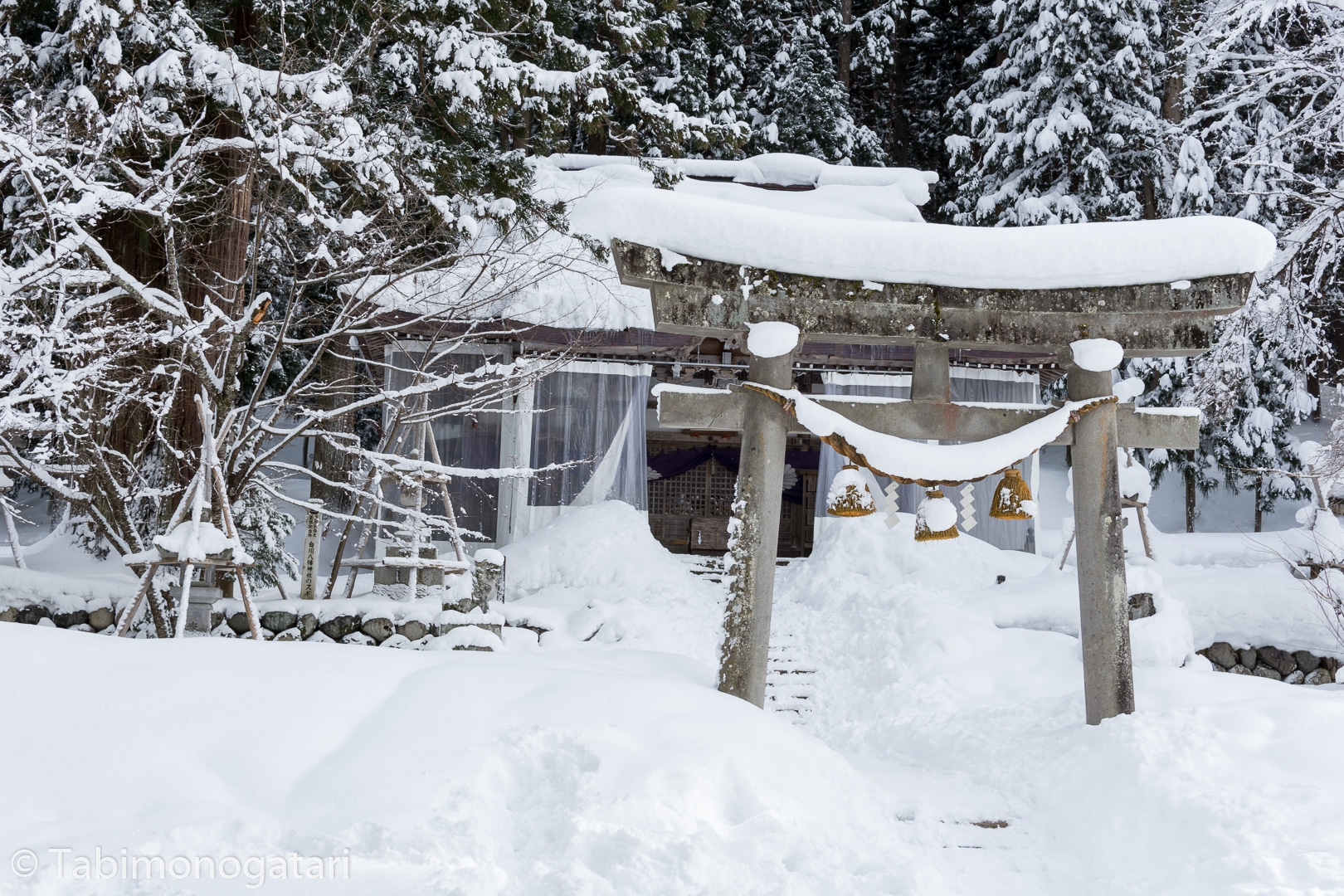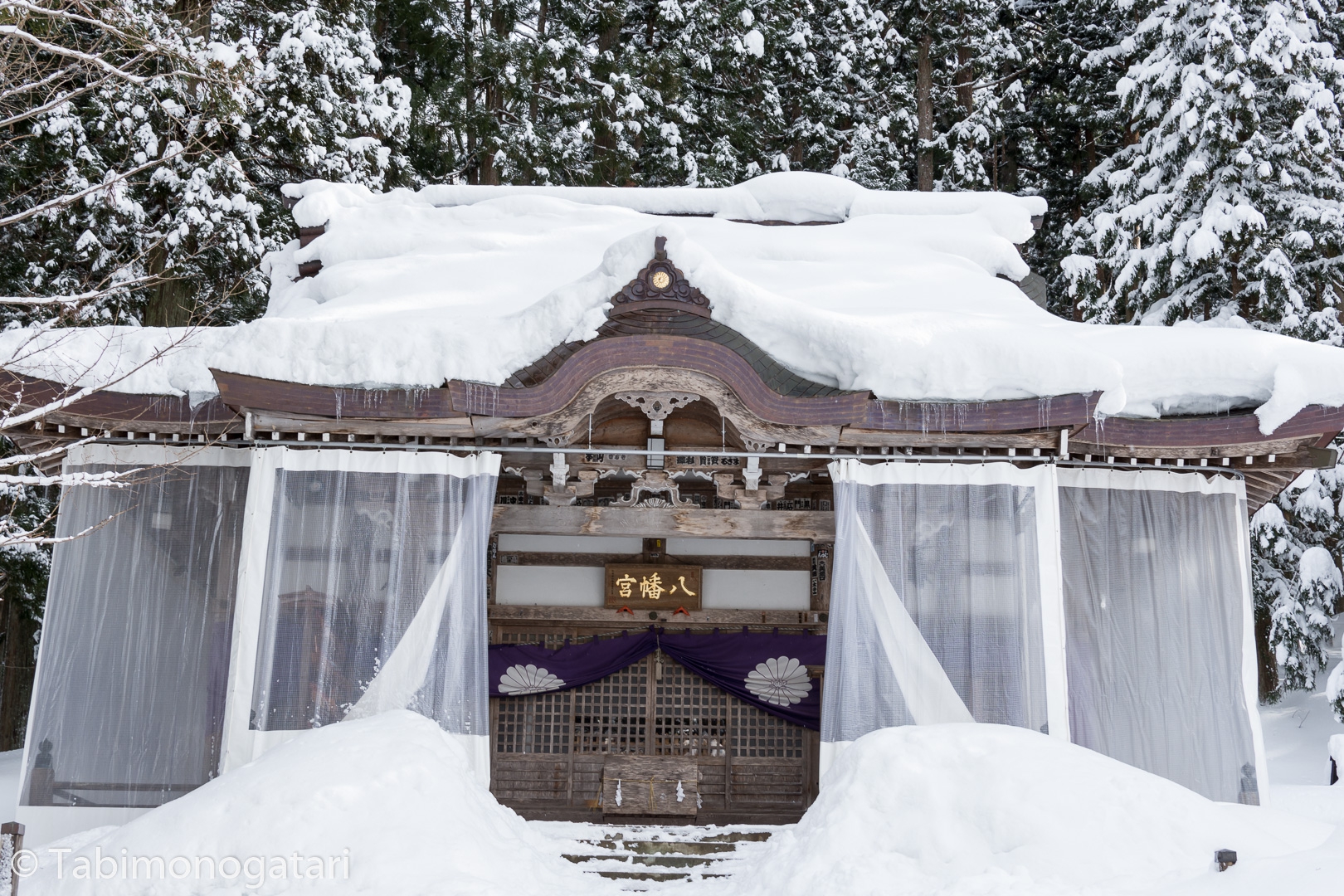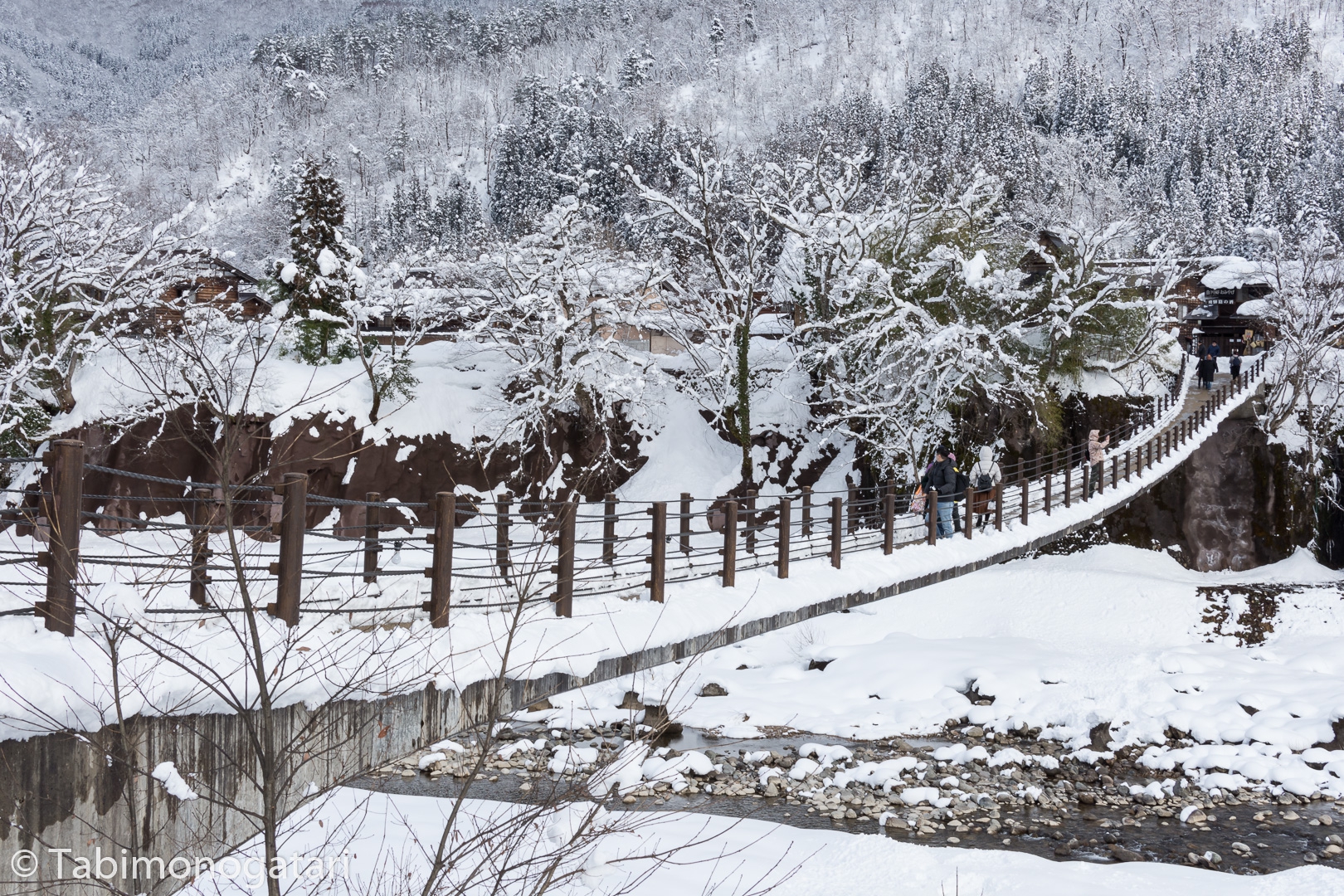In a day-trip from Takayama I visited the UNESCO world heritage sites of Ainokura and Shirakawago, remote villages with a special housing style in the mountains.
Taking from the experience I gained during my stay in Kusatsu I started the morning with a hot bath. Well, actually it felt only luke-warm to me, possible because I became used to the hot springs of Kusatsu too much.
At 7:30 I went to the breakfast room where a hot Japanese meal was waiting already. Some of the various dishes I recognized, the others were kindly explained by an accompanying sheet in English. The hiba miso, the miso soup and all other regional dishes tasted great and paired well with each other. Until 8 o’clock it was just me, a couple quietly eating and a tourism DVD playing in a loop. When the other guests arrived for the second breakfast slot, I had already left for the station.
From the hill one could see the town casted in the soft morning sun. The weather forecast lied another time, which made me very happy considering today’s day trip destination.
Visiting Ainokura and Shirakawago
For today I had arranged a bus tour to the historic Gassho Zukuri villages Ainokura and Shirakawago which are part of the UNESCO world heritage. On my first trip to Japan — already six years ago, I feel old — I visited latter and liked it so much; so I was happy to be able to return, especially in this good weather.
Just on time I arrived at the bus terminal where I confused the staff and myself for a minute until a woman guided me to the desk where I received a seat number and a pendant upon confirmation of my booking. It turned out that she was my personal English-speaking guide because the bus tour was not very booked today. In total there were four Japanese guests and me who were attended by the driver and two female guides.
In the front the young lady explained with maps, sketches and photos today’s itinerary, destinations as well as the cultural background of the villages. Meanwhile in the back we had a lovely conversation in English using the same materials but in a more laid-back dialog. My guide encouraged me to stand up and change the side often to catch the best photos while we passed over the highway and through several tunnels on the way to Ainokura. When we did not pass through one I had plenty of opportunities to capture the scenery outside. They even prepared several props to explain certain aspects of the tour such as a model of a straw-thatched house and a sasara, an instrument only used in the region.
To go a bit into the background of this day trip, besides the by now recognized and well-visited historic village of Shirakawago in Gifu prefecture exist two more villages that share the heritage designation: Ainokura and Suganuma in the Gokayama region of Toyama prefecture. Since both are quite remote, even compared to Shirakawago that is also larger, most visitors skip visiting the other villages, me included – until today. I was very happy to find a bus tour from Nohi Bus that offered a visit to both Ainokura or Suganuma and Shirakawago in one day.
In case I left you completely off track now where I am heading, here is a map of the area.
Map: Kanazawa Tourism
As a reminder, I came from Tokyo, first went to Kusatsu north of Takasaki and then to Nagano. From there I visited Matsumoto and then followed the Shinkansen line to Kanazawa. A few days later I rode the same line back to Toyama and then headed south to Takayama.
Ainokura
When we left Takayama it was sunny, but as we approached Ainokura village it began snowing. Just for a moment one could see the houses of Suganuma from the highway before heading into the next tunnel.
After 80 minutes the bus arrived in Ainokura. Here we had an hour time to explore the village on our own. It was gently snowing but an umbrella came in handy anyway. The first interesting thing to see was a viewing point a few hundred meters from the bus parking lot. While it would only take a few minutes to reach it in Summer, in the heavy snow it took much longer. On the way I encountered a local man who was cutting a passage into the meter-high snow. Thanks to him we could access the viewing point today.
The remote village is still inhabited and two houses were converted into museums. In total there are around 20 houses in which 60 people live at this point. Everything was buried under snow, even the local temple.
The Traditional Industry Museum at the end of the village on the left side is worth visiting. When I arrived, the lady at the reception turned on the space heater for me and explained some of the exhibits in greater details, such as the clothing made from robust washi paper and the musical instruments mentioned before.
The gassho-zukuri style houses are typically three stories tall, completely made of wood and are thatched with straw. The steep 60 ° angle of the roof prevents that too much snow piles up during winter. To fight the cold, a fire place called irori Is an integral component of the house. Back in the days, the second floor was used to grow silk worms and in the third floor there was a workshop processing the harvest. Besides silk the locals also used to produce gunpowder. Apparently, gunpowder was produced there because no enemy knew about the existence of these small villages deep in the mountains.
One one house there was a person removing the snow from the roof. It must be tedious to do this alone every day in Winter.
Just on time I made it back and we headed back south to see the Ogimachi district of Shirakawago. On the way we crossed the Sho river several times and there was a time where we changed the prefecture every kilometer for seven times, each time because we had to adept to the course of the river.
Shirakawago
We first made a stop not in the town center itself but at the observation point that cannot be accessed by foot in Winter. Seeing the iconic scene again after six years made me nostalgic. During certain days the houses are illuminated during night time which would make the scene even more magical.
A traditional lunch was part of the tour which included only fish and vegetarian items. This time there was not a bowl of pure white rice, which is related to the history of the village. In the time of feudal governments the tax every farmer needed to pay was consisting of white rice. Therefore, the farmers resorted to eat brown rice and soba noodles from buckwheat. In the top right corner was again some hoba miso. The miso of the region is just delicious.
There is another local specialty only to be enjoyed in Shirakawago: Doburoku Sake. This nigori style rice liquor was once only prepared for the gods to be enjoyed. It looked like amazake but tasted not sweet at all.
From here on we had two hours to explore the village on our own. The sun was shining most of the time and the sparkling snow put the traditional houses into the right light.
Some of the houses are open to the public, such as the largest Wada house or the Kanda house. Having seen the Wada house on my last visit, I explored the Kanda house this time. In the center burns a small fire which heats the whole house and creates a smoky flavor throughout. In one of the tatami floored rooms the owner had provided tea for the visitors. While sitting down two of the other visitors from the bus talked to me. It turned out that one of them came from Hokkaido and the other one from Shikoku. I would like to visit both places in the future, as there is much more to be seen. On the upper floors were tools from sake and silk workshops. The sliding windows could be opened to see outside as well.
The Hachiman shrine was heavily covered in snow but one could proceed until the prayer location.
To leave, one crosses the suspension bridge over the river where the open-air museum and the bus parking lot are located. The museum gives further insights into the living style of the villagers but is not part of the heritage site.
When I boarded the bus a bit earlier than last time I saw some unfamiliar faces which confused me first. It turned out the bus team of the adjacent bus were having a chat with our team while waiting for our return. They kindly offered me tea and apple senbei and we talked a bit in Japanese. When the other passengers returned, I sat in the front with the others and tried to follow the Japanese tour. Doing so, the ride back was even more enjoyable than before.
Here I make a cut since the article reached a certain length and the continuation fits better into tomorrow’s travel log. Please read also the next article to find out what I did after returning to Takayama and what happened the next day.
